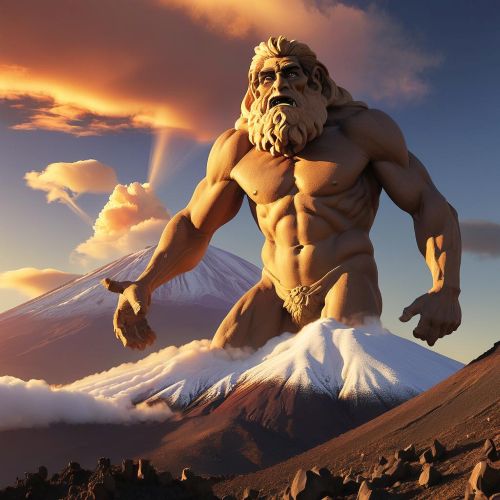Guanche Mythology
Guanche mythology belongs to the mysterious and ancient culture of the Guanche people, the indigenous inhabitants of the Canary Islands before Spanish colonization in the 15th century. Though much of their history was lost through conquest and assimilation, the surviving fragments of Guanche mythology reveal a deeply spiritual worldview rooted in nature, ancestral reverence, and the rhythms of island life. The Guanches lived in harmony with their volcanic landscape and believed that mountains, caves, and celestial bodies were sacred places where gods and spirits dwelled. Their myths, preserved through oral tradition and early chroniclers, tell of divine creation, moral balance, and the eternal connection between humanity and the forces of nature.
At the heart of Guanche mythology lies the supreme god Achamán, the creator of the world and guardian of the sky. According to legend, Achamán fashioned the earth, the sea, and the first humans, granting them fire and life. He was both distant and ever-present—a divine force that maintained cosmic order while watching over his people from the heavens. Opposing him was Guayota, the spirit of darkness and chaos, who lived inside the great volcano Teide, believed to be the gateway to the underworld. In one of the most well-known myths, Guayota kidnapped the sun and trapped it inside the volcano, plunging the world into darkness until Achamán battled and imprisoned him, restoring light to the islands. This cosmic struggle between light and darkness symbolized the eternal balance between good and evil—a theme that runs through nearly all Guanche legends.
The Guanches also revered a range of lesser deities and spirits tied to natural forces and daily life. The goddess Chaxiraxi, sometimes identified as a solar or mother figure, was honored as the protector of fertility and the bringer of life. When the Spanish arrived, she was syncretized with the Virgin of Candelaria, the patron saint of the Canary Islands, demonstrating the enduring legacy of indigenous belief beneath Christian adaptation. Spirits of the dead, known as maxios or bencomos, were seen as guardians of the living, while sacred caves served as both burial sites and spiritual sanctuaries where offerings were made to maintain harmony between worlds. The Guanches viewed death not as an end but as a transformation, with the soul continuing its journey alongside the gods of the mountains and the stars.
The mythology of the Canary Islands also reflected the Guanche people’s respect for natural cycles—rainfall, harvest, volcanic eruptions, and celestial events were all interpreted as messages from the divine. Rituals, dances, and chants were performed to honor the gods, seek rain, or ensure good health and protection. Even after centuries of colonization, these myths echo through Canary Island traditions, place names, and festivals that celebrate ancestral memory.
Guanche mythology, though fragmentary, remains a testament to humanity’s universal desire to understand creation and the unseen world. In the whispers of volcanic winds and the glow of Mount Teide’s peak, the ancient voices of the Guanches still speak—guardians of a vanished faith, yet forever a part of the spiritual heritage of the Atlantic world.


